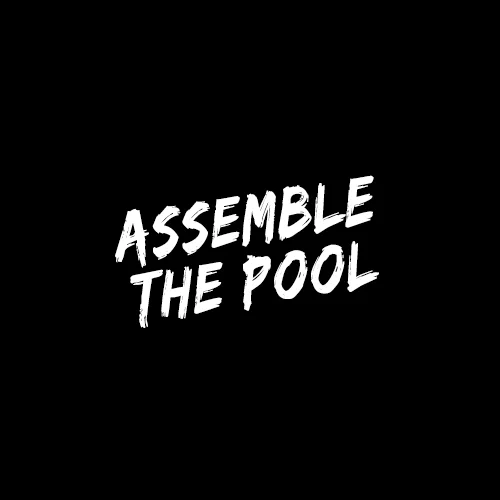How To Set up your stock tank pool
The first and most important thing you need to do is set up your pool to filter water. If you don’t set up a filter, you will spend your summer battling dirt, sediment, debris, and/or algae. If you would like a more hands-off approach for your stock tank pool maintenance, you’ll want to follow this tutorial.
phase 1.
You can purchase your stock tank at your local co-op or Tractor Supply, and you can even order from Tractor Supply online! In some cases they can even do same-day delivery for a small fee. This is always a great option as the stock tanks are unmanageable in a car or SUV.
Unfortunately, when you purchase the filter pump, you won’t get everything you need for this project. We have a list below of the exact parts you need to convert your stock tank into a legitimate pool.
Things you will need:
(Click on each item below to purchase via affiliate links.)
- 8 ft. Stock tank
- Weatherproof Silicone Sealant
- Second Pool Outlet This is the outlet that is out of stock. These two pieces will work in it's place: Inlet Connector (You'll have to close off the hole with waterproof tape, as that part is out of stock) + Strainer Grid OR you can purchase THIS SET and use only the parts you need from it. It includes a strainer nut, so if you go the set route, make sure you don't double up!
- 1-4 Rubber Washers (or Gaskets) (The pool pump setup guide packet says you only need 2 rubber washers (the pump comes with 1), but I ended up using 3, and you could end up using 4 depending on preference.)
Other things you will need for maintenance:
- Water Testing Kit
phase 2.
1. Find a nice level area to lay the stock tank on. If the area where you have chosen isn't level, use sand or rocks to build up whatever side needs it. It is very important that your stock tank be level so there aren't any unexpected leaks.
2. Cut holes in your stock tank. I'm not going to lie- this is a pain in the butt. We bought a hole saw with an arbor and it took two people to get through the metal. You will need two holes, one at the top and one at the bottom. In an above ground pool, these aren't usually right on top of each other, but ours are. We haven't ever seen this as a problem.
3. Start assembling the parts. In the pool pump package there is a packet with instructions, warnings and troubleshooting. This packet proved to be vital in the setup of the pool. I did end up getting 2 gaskets for the bottom section (the drain section), one for the inside of the pool and one for the outside. It only says you need one for the inside, but this was causing a drip for us. I also put thread seal tape around the connections that were closest to the pool. There are a lot of connections, and each one has a gasket, so you could probably get away without the tape. I didn't put it on all the connections, the only ones that really seemed to matter were the ones that are connecting the hoses to the pool.
4. Apply silicone waterproof sealant around all crevices involving the input and output parts. I did this on the inside of the pool and the outside. And I applied it VERY HEAVILY and did two layers, allowing one to dry before the second was applied. Sealing these crevices is one of the most important parts. This is what is going to keep the water in the pool. Well all of these steps are leading up to keeping water in the pool, but if there is any chance that it's going to be getting out, this is what will save you.
5. Test for leaks. Before I added water to the pool, I took a water bottle and poured a good amount of water on the input and output parts. You could also just use a water hose. I would make sure the hose wasn't on full blast. You don't want to accidentally penetrate the sealant.
6. Once you are sure there aren't any leaks, fill the pool just above the bottom hole/output. Check again to see if any leaks have started. If there aren't any, fill the rest of the pool up!
7. Turn the pump on. Make sure both plunger valves are open/unlocked. When you first do this water may not come out of the output, but there is a solution! Twist off the knob on top of the filter pump to let some air out. Some water may escape too and that's okay, just be ready to screw it back on as soon as the water starts coming out.
And then you are done!
don’t do these!
Here is a list of things to watch out for.
1. Cutting the holes too big. We cut our holes 3 inches across because there were only two hole saw sizes at our Home Depot, one 2.5" and one 3". The parts are about 2 3/4" so we went up. Ideally we would've realized that we just needed to go to another store, but at the time 3" made sense. This caused a lot of dripping problems because there is a small gap between the edge of the hole and the input and output pieces. We combated this problem by adding another rubber washer/gasket on the outside of the pool, before the nut is screwed on. Plus plenty of silicone sealant!
2. Not making sure the pool is level. We actually just had our concrete poured before we set the pool up so the ground was sure to be pretty level. Where we placed the pool was pretty level, but apparently it dipped down a little in the area where we had the holes. This caused all the water pressure to be leaning on the same wall, so there was leaking no matter what we did. All we did was rotate the pool and put a thin piece of plywood under the edge where the holes are and this leveled it out!
3. Using foam sealant to seal the crevices. No. Just no. Our landscape guy did this last year and it worked, but this year when we changed out setup, it never helped. First off, if you are going to use foam sealant, make sure you get a polyurethane based one. The other ones simply don't cure. I originally used one without polyurethane and I left it for 10 hours and it still hadn't cured. No thank you! Also, silicone sealant does a way better just, maybe just because it's easier to get it in the crevices since it doesn't expand. Wear gloves! Everything mentioned is extremely sticky and will become part of your skin.




